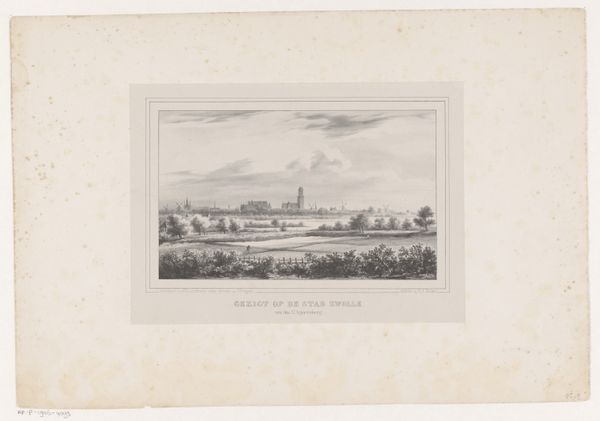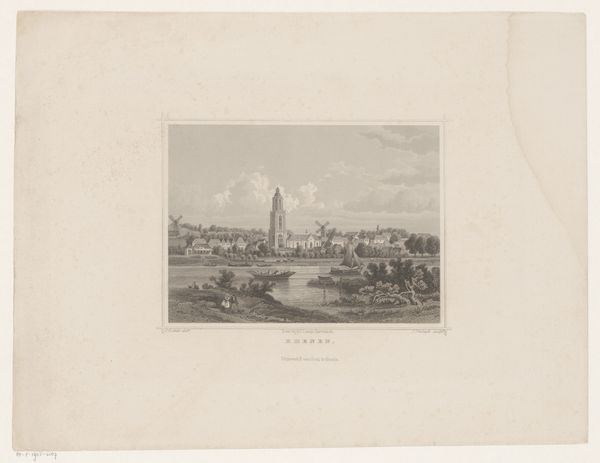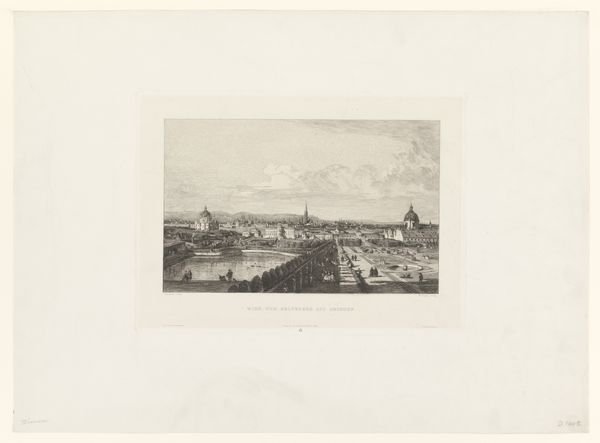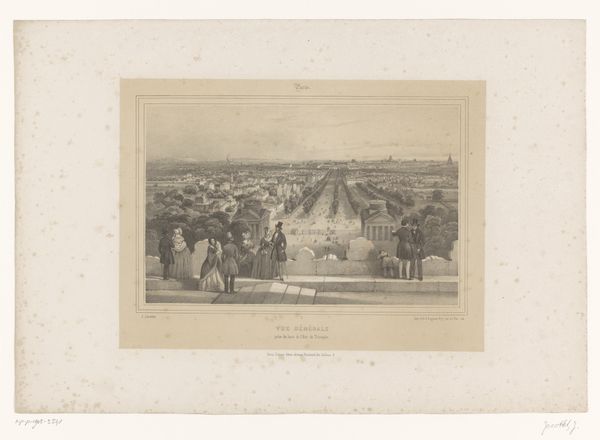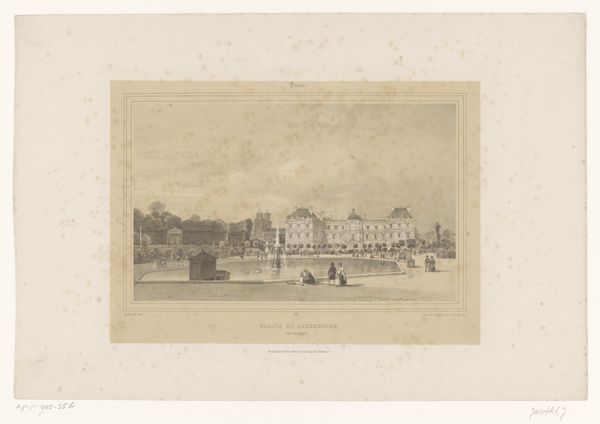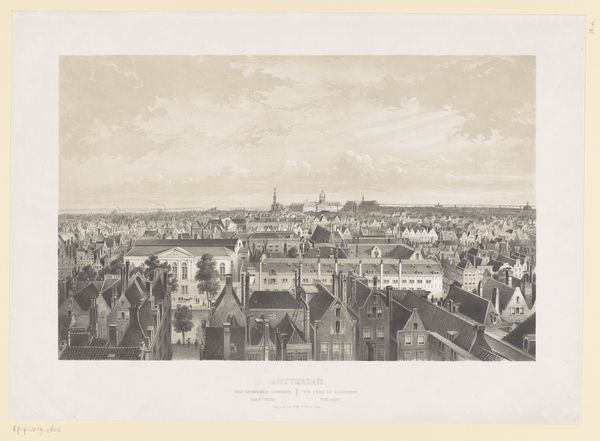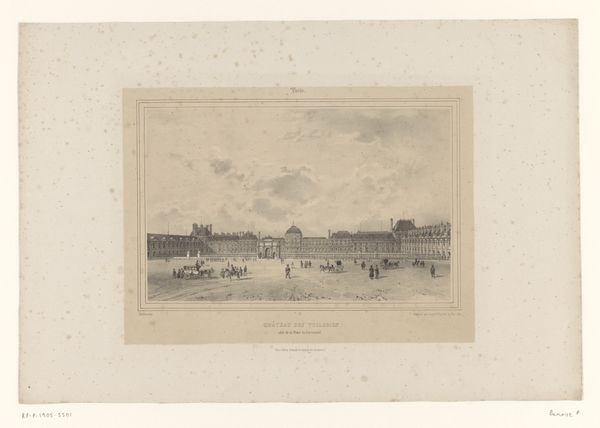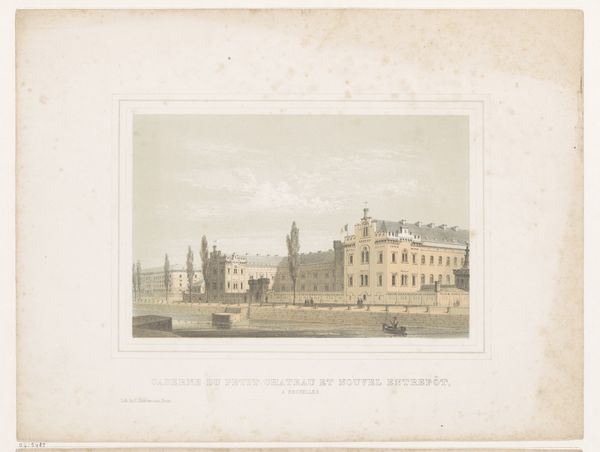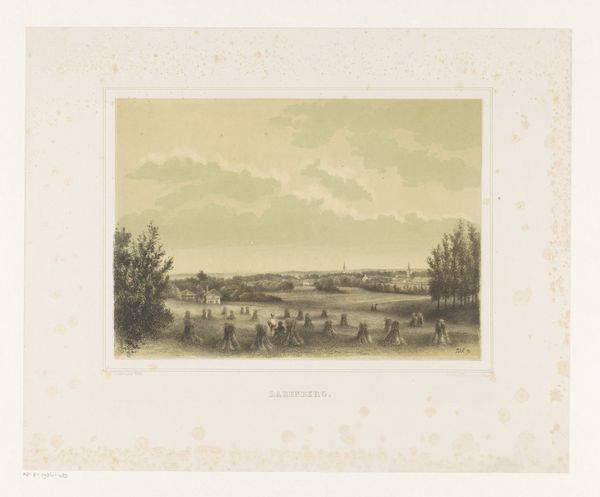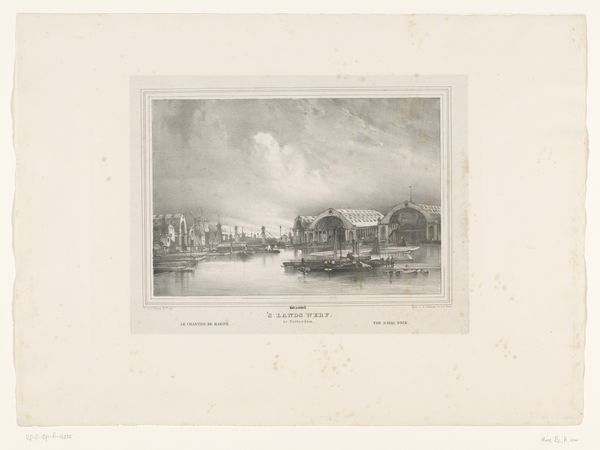
Zicht op de Place de la Concorde vanaf het terras van het Tuilerieënpaleis 1843 - 1844
0:00
0:00
philippebenoist
Rijksmuseum
print, engraving
# print
#
landscape
#
romanticism
#
cityscape
#
engraving
Dimensions: height 303 mm, width 450 mm
Copyright: Rijks Museum: Open Domain
Curator: Here we have "View of the Place de la Concorde from the terrace of the Tuileries Palace," a print made by Philippe Benoist between 1843 and 1844. It’s currently held here at the Rijksmuseum. Editor: It's striking, a cityscape rendered with an almost dizzying level of detail. I'm drawn to the way the bustling crowds seem to animate the whole scene. What’s the context here? Curator: Well, Place de la Concorde was the site of many significant events during the French Revolution, including the execution of Louis XVI. By the 1840s, when Benoist created this engraving, it had become a symbol of national unity and reconciliation, a very carefully constructed image. This print played into that narrative. Editor: The scale seems crucial. An engraving allowed for widespread distribution, making it a vehicle for disseminating a specific, potentially idealized, view of Parisian society. And the texture—it's interesting how the fineness of the engraved lines, the artist's craft, lends an air of order, almost of control, over the teeming masses below. Curator: Exactly. Benoist carefully manipulates the visual language. Note the elevated perspective, suggestive of the Palace, implicitly positioning the viewer amongst the ruling elite looking down upon the square. It reinforces a hierarchical social structure. Editor: But it's also the quality of labor involved in producing this image. The artist's hand meticulously recreating every detail… It speaks to a time of skilled craftsmanship but also of reproductive technologies making such images accessible, in a way that was impossible before. Curator: The printing process indeed democratized art, making images accessible to a broader audience and shaping popular perception of the city and national identity. Editor: So, we have an artwork that is at once an example of high craft and mechanical reproduction—a powerful statement about social order, presented through painstaking detail. Curator: Precisely. This piece prompts us to consider the power of art in shaping historical narratives, and the role of public spaces within those narratives. Editor: It also makes you consider the lives, materials and labor, that went into making images, that shaped cultural ideas. I find myself wanting to look closer, think more about who owned these prints and where they might have been displayed.
Comments
No comments
Be the first to comment and join the conversation on the ultimate creative platform.
